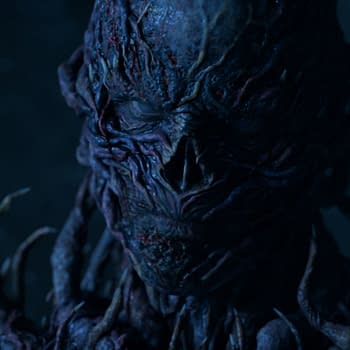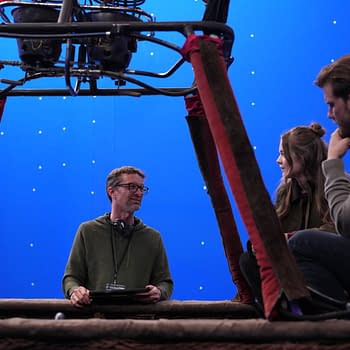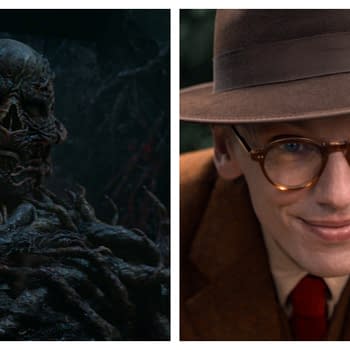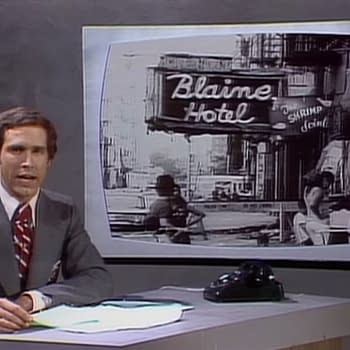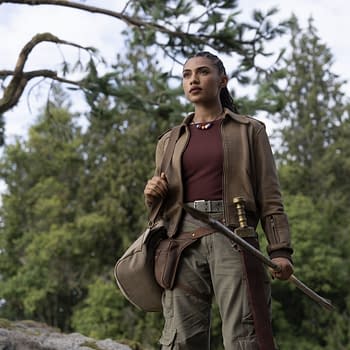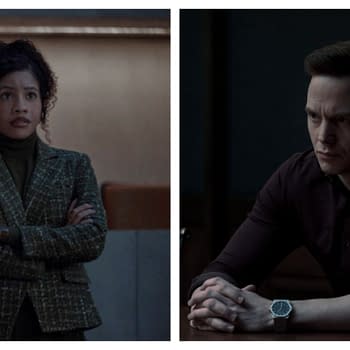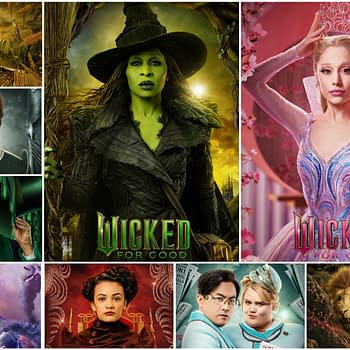Posted in: Exclusive, Horror, Interview, Movies | Tagged: exclusive, interview, Jagged Edge Productions, Rhys Frake-Waterfield, winnie the pooh, Winnie the Pooh: Blood and Honey
Winnie The Pooh: Blood and Honey Director On Planning & Reactions
Winnie the Pooh: Blood and Honey director Rhys Frake-Waterfield talks to Bleeding Cool about any difficulties, his versatility & reactions.
Filmmaker Rhys Frake-Waterfield has learned a lot in his nine years in Hollywood becoming a jack-of-all-trades as a producer and putting on as many hats as he had. His hard work paid off since his debut in 2014. After taking a break, he's churned out several projects over the past three years including The Area 51 Incident (2022) and the recent Firenado. There's a huge buzz surrounding his horror take on A. A. Milne's beloved characters in Winnie the Pooh: Blood and Honey as the author's work entered the public domain after the end of 2021. He's not done yet from that realm as one of his upcoming projects is Peter Pan's Neverland Nightmare, a twist on the J. M. Barrie characters. Frake-Waterfield spoke to Bleeding Cool on some of the more difficult scenes he had to film and how he lucked out on a woodchipper, how his versatility helped him in directing, and the initial reactions about the film. The film follows Pooh (Craig David Dowsett) and Piglet's (Chris Cordell) bloody rampage in search of a new source of food after Christopher Robin (Nikolai Leon) abandons them for college.
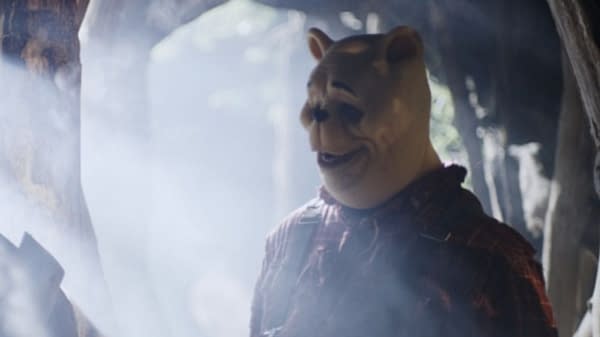
How Frake-Waterfield's Versatility Helped Him in Winnie the Pooh
BC: Aside from having to kind of reimagine 'Winnie the Pooh' film from the ground up, was there any sequence or aspect of the film that was particularly difficult to shoot?
Frake-Waterfield: When you don't have loads of resources to make these horror films, there's a lot that can go wrong on the day. You can do all the preparation you want, and you can say, "this is going to be my shot list. This is going to be the blocking. This is the location I want to use. Then you turn up on the day, and something's happened: The location isn't available, the actress or actor may not have turned up in time, or the prop might have broke. Something like that almost always happens. What you need to be able to do with that as a director, is be dynamic and be able to improvise a scenario that can happen, a new form, or a new death scene that may come across well. I had to do that on 'Pooh' quite a few times. One which stands out was the character who gets killed. I had this big sequence in my mind. I was like, "She's going to get to this location. There's loads of sawdust and dust all over the floor, so I'm going to get her to where Pooh throws a hammer at her and is going to break her ankle so she's crawling. While she's crawling, there's going to be kind of a mix of blood and sawdust all over her."
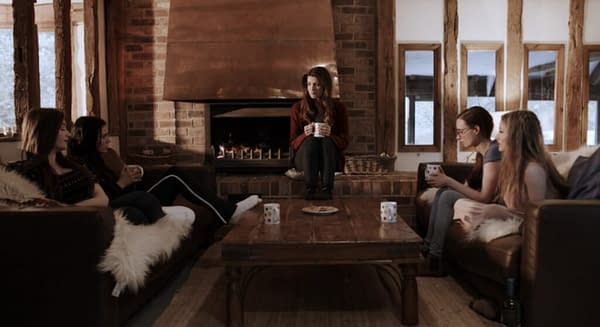
You can get really weird imagery there where she's covered in blood and sawdust, and she's screaming while trying to crawl away from him. He's slowly walking over, which is on brand for horror. We got to the location and it was like, "You can't do that because that section's out of bounds." I was told I've got two and a half hours to do this death scene. I had to look around and within five minutes just come up with something completely different I noticed a woodchipper that was on the land they had, and I asked the farmer about it and got his permission to use it. We ran over, grabbed it, and we just dragged it into the barn. I had all of the blocking kind of around this machine, and I knew that was going to be like the death vehicle for putting her into this woodchipper, grinding her up, and killing her. It became much easier to film because it's isolated in one sort of space. It can be artificially lit because it's inside, which can make things look scarier. Ultimately, it became one of the stronger death scenes of the movie. That can happen sometimes when you're like having to think on your feet and not constrain yourself to one idea. It's something I'm going to take with me going forwards because people can get lost and blindsided. I've done all this preparation for this one sequence. That's what I want to do, and if it's possible, I'm going to do it. You become ignorant of what the other possibilities are because new things can be there like that woodchipper I didn't see that before.
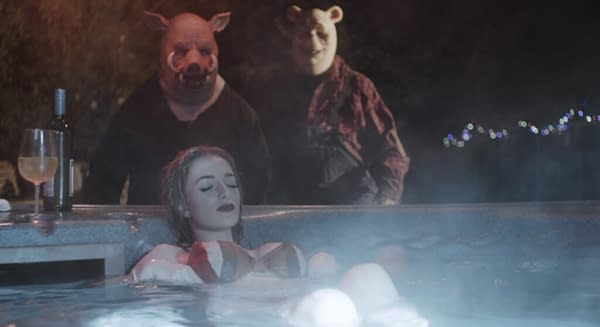
Was there anything from your previous projects that helped you into Winnie the Pooh?
I originally worked in a different industry, and then I started doing film and producing with experience in other areas. When you produce on low budgets, you need to be capable of jumping in and doing any job. There are not just problems in the locations, but there can be problems with the crew and cast as well. I've had to be a director of photography, record sounds, fly drones, and perform other tasks. I've had to direct other people when they've not been able to. All of these elements and experiences I built up whilst I was focused primarily on producing lend themselves when you want to direct because you have more of an understanding of the process from start to finish. Stuff would go wrong in post-production, like the editing. There would be issues with editors. There was an issue with a composer on one film, so I had to do the score for a film. I've had to edit the film. When you gain this understanding of these different components, it brings an element of an extra part of your game for when you want to direct. This varied knowledge comes together, and you become more confident with it too. 'Winnie the Pooh' would be the perfect project for me because I believed in the idea. It had potential, and I knew what would look cinematic, which is why we've got elements in the movie where a car is on fire in the background because it translates well.

Since starting working on this project, what's the reception been?
Once it became viral and everyone became aware of it, my inbox was divided between two camps of people. Half loved it and told me it was the best thing in the world. They were obsessed with it, and some were cosplaying as the characters. The other half hated it and felt like "I'm the devil," "I'm pure evil," and I am destroying loads of childhood memories. Those people are still coming at me all the time. We've had petitions and death threats. We've got those threatening to call the police on us. Anything you can think of is happening in that space [laughs]. In terms of legal, there's not been anything with that because what we've tried with Winnie the Pooh was as stay as clear from Disney's interpretation of him as I could. I didn't want to get anywhere near that. That's their version of him. He's small, got a red shirt, and says and does nice things. My version is big and menacing, and he stabs people in the head. He does lots of horrible stuff, and you won't confuse the two.
Winnie the Pooh: Blood and Honey, which also stars Maria Taylor, Natasha Rose Mills, Amber Doig-Thorne, Danielle Ronald, and Natasha Tosini is available in theaters.






